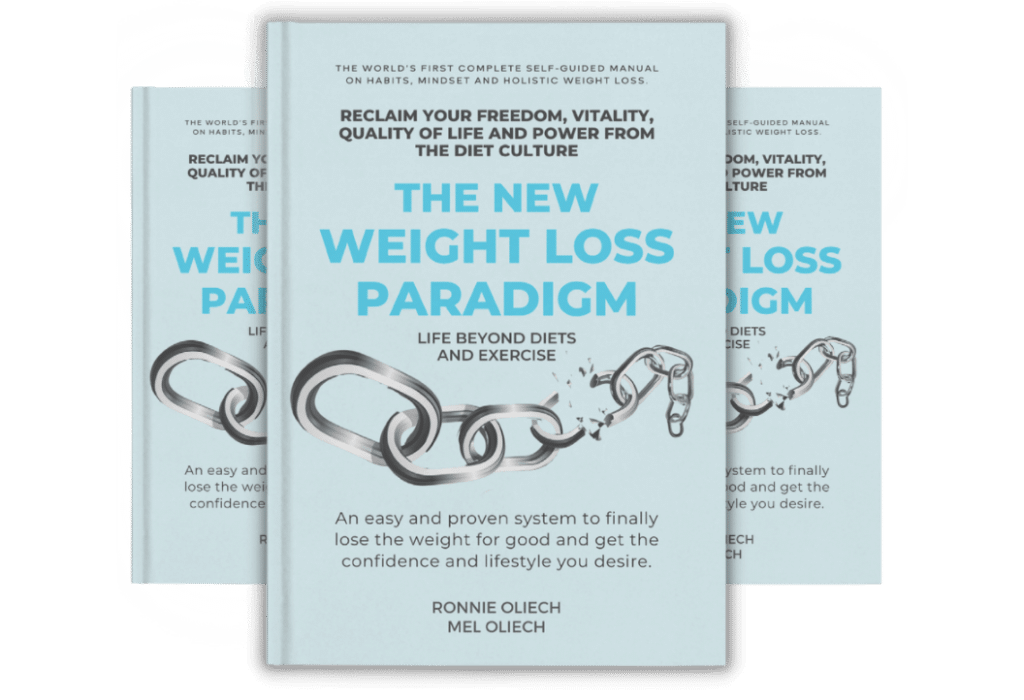You know how it goes.
You get to the point where you’re absolutely sick of yourself. Sick of the weight, sick of feeling uncomfortable and sick of not fitting into your clothes.
So you decide you’re going on a diet. You’re going to lose the weight, so you can start to feel good about yourself again.
Things go well for a while. You’re eating well, have cut out alcohol and are exercising regularly. The scales tell you you’re losing weight, and people are starting to notice you’re looking different. Compliments begin flowing and you’re feeling good about yourself again. You feel in control and the pain you were in a few weeks ago has become a distant memory.
So you ease up a little. Your workouts aren’t as regular as they used to be. You start to allow a few more ‘treats’ to sneak into your eating plan and you start drinking again — just on weekends. But it’s not long until you have the odd glass of wine during the week as well.
Before you know it, your new-found confidence in your weight loss has taken a dive because the weight is creeping back again. You tell yourself that you’ll ‘get back on track’ and lose it again, and so the dieting cycle continues.
The need to snap
If the above scenario is familiar to you, you’re probably wondering why you can’t seem to lose weight and keep it off.
This is a common problem for many people. Losing weight is the easy bit. Keeping it off for good is what most people struggle with. And the reason they struggle is because they’re too comfortable.
Unless you’ve reached the point where you’ll do anything to relieve the pain you’re in, your results will only ever be short-lived.
You need to have a ‘snap point’. Because when you do, you’ll have a strong and compelling reason to make changes that will lead to long-term results.
What is a snap point?
A snap point is when you’ve had enough. The point where you can’t take it anymore. It’s the place where your pain is too great, and you’ll do anything to get out of your current situation. And you’d rather die than go back to where you are, ever again.
If you don’t fully understand what the above means, then you haven’t had a snap point.
Snap points often come after you’ve hit rock bottom.
When you hit rock bottom, you’re in a world of pain that you never imagined. You’re lower than low, and don’t know how you’ll ever get out of the situation you’re in.
But you do know that you’re finally willing to do whatever it takes.
Snap points lead to your ‘why’
To transform your body shape and keep your results long-term, you need to have a reason to change. We call it a ‘WHY’. When you know why you’re doing something, it becomes much easier to do and to do consistently.
Finding your WHY usually comes from hitting rock bottom.
In a previous blog about Finding your Why, we looked at the power of knowing your WHY, and how it helps you going in tough times.
Now, we’d like to illustrate how hitting rock bottom and having a snap point, can be one of the best things to happen to you, if you want to lose weight for the long-term.
Mary
Mary has decided she needs to lose weight. Summer is coming and she really wants to be able to wear some of the clothes she wore a couple of years ago, that she no longer fits into. Mary changes her diet, cuts out sugar and alcohol, and starts restricting her calorie intake. She also starts exercising. She finds it really hard to get out of bed in the morning to fit in her walks and workouts, but she knows that when summer comes, she’ll be wearing the clothes she wants to wear, so she’s willing to ‘grit her teeth’ and bear it for a few months. Once she reaches her goal, she promises herself that she won’t be so strict on herself, and that she will be able to enjoy her food again. But for now, it’s lean meat, lots of veggies and smaller portions.
Mary begins losing weight and her confidence increases. But she’s also tired and a bit cranky. She’s really getting sick of saying ‘no’ to her favourite foods, and the exercise program she’s designed for herself is becoming boring and a bit of a drag. But she keeps pushing herself, because summer is just around the corner. It’s only a few more weeks of being strict, and then she can relax. Besides, she’s really enjoying the compliments she’s getting and is determined to reach her goal weight.
Mary does it! She reaches her goal weight and loves wearing her ‘new wardrobe’. She’s receiving compliments everywhere she goes about how great she’s looking. And the best bit is that Mary is now able to enjoy her favourite foods again. She’s going out socially with her friends, enjoying wine and dessert and has cut back on her exercise. Now that she’s at her goal weight, life is good.
However, as summer begins to fade, Mary notices that her clothes are starting to feel tight again. She’s secretly relieved the weather is getting a bit cooler, as it means she can ‘cover up’ and start wearing clothes with a little more ‘give’ in them. Mary is frustrated with herself for putting on weight again, especially when she worked so hard and sacrificed so much to get to her goal. In fact, the pain involved in losing the weight is still very real, so she decides to ‘give herself a break’ over winter, and focus again on it in Spring. After all, she knows her winter clothes will still fit…..
Joan
Joan is at a family wedding. It should be a happy day, but she feels terribly depressed. The dress she really wanted to wear didn’t fit, and so she had to resort to a pair of black pants, that barely did up, and a loose top. She feels very self-conscious and uncomfortable in her clothes. At the wedding, Joan notices how wonderful and happy everyone else looks. Instead of feeling proud, she feels fat and frumpy. She feels like running away and hiding, instead of getting on the dance floor and celebrating such a happy occasion.
During the reception Joan watches everyone else having a fabulous time, and begins to feels angry and resentful. She’s also jealous of the other women her age who are wearing clothes that she’d love to wear. Joan feels awful and can’t wait to go home. After the speeches, she bids farewell to the happy couple, and tells them she has a migraine. In reality, Joan can’t stand to be in that room any longer.
On the way home, Joan realises that she never wants to feel that way again. She sheds many tears over her situation, accepts that she needs to change things in her life, and vows to get someone to help her. Joan commits to working with a coach to help her lose weight for the long-term. She is fully invested in doing whatever it takes, so she can be happy. She begins exercising and sometimes finds it hard to do it. But she knows that it will lead to the life she wants, so she gets on and does it without complaining. She’s not fixated on the scale or her dress size, as she understands that to live the life she wants, she needs to change the habits that have led her to her situation.
During the process, Joan is confronted by many of her fears and is often asked to do things she doesn’t want to do. But instead of running away, she’s willing to do these things, as she has a very strong reason to change. She knows that losing weight isn’t just for the next family occasion. It’s so she can feel happy and healthy, regardless of where she is and who she’s with. Joan is willing to put in the work, for a long-term result she can keep — not just for short-term praise about how good she looks. She also understands that the process may take time, but she’s willing to be patient, because she knows that a ‘quick-fix’ will only relieve her pain for a short time. Making long-term change will mean she’ll never find herself feeling like she did at that wedding.
Can you see the difference that hitting rock bottom makes to someone? In the examples above, Mary is still looking for a short-term fix for her problem. She does what she has to, to lose weight for summer, but her hard work is for short-term results only, and she’s left feeling burned out and frustrated that she wasn’t able to keep them. She also feels that the only way to lose weight, is to keep going on diet after diet.
Joan on the other hand, has had a snap point. She’s hit her rock bottom and now understands that she needs to make lifestyle changes, in order to avoid being in that situation again. Because of the pain that she experienced at the wedding, Joan now has a strong reason to change. She has a strong reason to do what she needs to do, even if it’s hard because she knows that it’s the only way to long-term weight loss. The most important part about this, is that she is actually doing what it takes to get her result.
What you gain by hitting rock bottom
Many people are afraid of having a snap point and hitting rock bottom.
That’s understandable. As human beings, our natural instinct is to protect ourselves from harm and keep ourselves safe. But staying in your comfort zone and avoiding difficult things only leads to long-term pain.
Hitting rock bottom is hard. It’s confronting and it can be deeply unsettling.
But most people who hit rock bottom end up being grateful for the experience (as unpleasant as it was), because it was the catalyst they needed for them to turn their life around, and create something better than what they had before.
Hitting your rock bottom and having your snap point will give you:
- a strong reason to change, which will lead to long-term results that you will keep
- clarity on what has led you to the situation you’re currently in
- a reality check, which will help you see where you really are and what you need to change
- clarity on what you want
- clarity on why you want these things
- an opportunity to create the kind of life and body you really want
- a reason to keep going when motivation is low or non-existent
- patience to keep putting in the work required, even if you feel you’re not making progress
- a commitment to the process, whatever it may involve
- resilience that you previously didn’t have
- a willingness to take a risk that you previously wouldn’t take
- more peace about losing weight, because you’re no longer driven by a deadline
- hope, because the only way from here is up.
We understand the power of a snap point and how hitting rock bottom can be what you need to make long-lasting change to your body shape. Those who are most successful in their transformation journeys are those who have experienced the lowest of the lows.
While hitting a snap point can be confronting, we know that a real, true transformation is just around the corner.


















